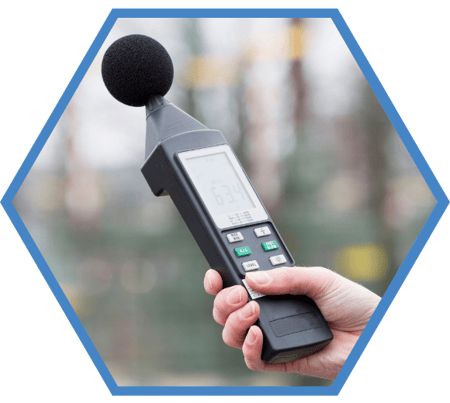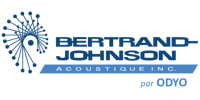NOISE MEASUREMENTS
Noise Dosimetry
To measure the dose of exposure to noise

By Tommy Keegan | Industrial Audiologist
Noise dosimetry is a precise method for measuring exposure to noise in different environments, whether industrial, urban or recreational. In other words, it assesses not only the loudness to which a person is exposed, but also the duration of this exposure over a given period. This approach is essential for understanding the cumulative impact of noise over time, and for correctly assessing health risks.
The challenge of industrial noise
Noise exposure in industrial environments is a major public health issue. High and prolonged noise levels can have serious and often irreversible consequences, such as:
- Progressive hearing loss.
- Tinnitus.
- occupational deafness.
To protect workers, precise standards set maximum exposure thresholds, calculated on the basis of exposure duration and sound intensity. These thresholds are essential to reduce risks and prevent harmful effects on hearing health.
The difference between sonometry and dosimetry
Unlike sonometry, which measures sound levels at a given point in time, dosimetry records the evolution of noise over a prolonged period. Dosimeters, worn by workers, continuously measure noise levels (in decibels, dB), taking into account noise variations throughout the day. This method enables a more complete and realistic analysis of noise exposure in the workplace, particularly at a precision workstation.
Data collection and analysis
The data collected by the dosimeters is analyzed to calculate the "noise dose", a measure that combines sound intensity and duration of exposure. This analysis enables us to:
- Identify workers exposed to dangerous levels.
- Determine whether regulatory thresholds have been exceeded.
- Assess the overall risk to hearing health.
For example, a worker exposed to moderate noise over a long period and to intense noise peaks will have a different exposure to that of a worker confronted with constant, high noise. Dosimetry provides a detailed view of these differences and helps to predict specific risks.
Corrective and preventive action
Dosimetry results can be used to implement corrective and preventive measures, including:
- Individual hearing protection: earplugs, earmuffs.
- Technical improvements: enclosure of machines, installation of acoustic barriers, active noise reduction devices.
- Organizational changes: reduction of exposure time in noisy areas, reorganization of working hours.
These measures, combined with employee awareness-raising, help minimize risks and ensure a safer working environment.
The importance of training and follow-up
Employee awareness and training play an essential role in preventing hearing risks. Employees must be informed about:
- The dangers of noise exposure.
- The correct use of personal protective equipment (PPE).
Regular monitoring of dosimetry and hearing assessments are also essential. These assessments enable early detection of signs of hearing loss and intervention before irreversible damage occurs.
Periodic assessment is essential
Regular dosimetry studies are recommended, in particular:
- When new equipment is introduced.
- When reorganizing work areas.
- When production processes are modified.
Noise levels in an industrial environment can change as equipment wears out or production intensifies. Periodic monitoring ensures that preventive measures remain effective.
Outlook and sustainable prevention

Measure the risk with our noise measurement services
Identify noise risks early on in your hearing loss prevention program and develop an action plan to reduce the risks.

-1.png?width=144&height=72&name=BJA%20_%20Logo%20Color%20%20(1)-1.png)